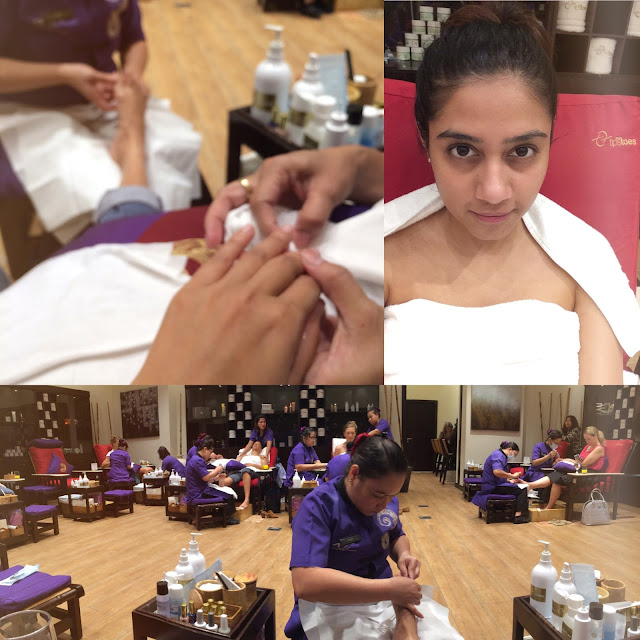Tuesday, 12 April 2016
Palm Jumeirah's Golden Mile just got prettier
Trademark touches are apparent throughout the salon, from the candle-lit spa corridor to the cushioned reclining nail stations. With massages, facials, hair removal, eyelash extensions and of course, Tips & Toes Golden Mile offers its exceptional nail services.
Labels:
Dubai,
golden mile,
manicure,
massage,
palm jumeirah,
pedicure,
salon,
tips and toes
Saturday, 2 April 2016
Dubai Coffee Museum: More than just a caffeine high
Walk down the quaint alleyways spotted with souvenir stores and art cafes, and it's easy to get lost in all the serenity. It's almost like the movies, where houses are close to one another, making it a closely knit community. One of the houses here has been converted into the Coffee Museum. What once was a pet project by Khalid Al Mulla, the museum director, has grown to be a two-storey-full collection of coffee history, garnished with antique tools, grinders, roasters, brass urns, coffee-sacks, sampling implements and ornate cups.
From the get go, a very distinctive aroma of coffee fills the air. As it pulls you in, you pass a majlis - a meeting room, and you walk right in front of a big silver object which is an Egyptian charcoal fire burner. A metal pot with a wooden handle, ibrik is placed on a bed of sand which is heated by charcoal. The hot sand heats the ibrik equally on the side resulting in a perfect brew.
The Coffee Museum in Hamburg inspired Al Mulla to take his passion for coffee to the next level. "The difference between my museum and any other is that I have antiques from all over the world," he says. It is evident with the display of grinders and roasters dating back to the 1800s, from European and Western countries as well as Arab countries.
Yemen was the first country in the Middle East to acquire a taste for coffee, which only developed into a love for the product. The museum takes you through the journey of coffee, from the Middle East via the Ottoman Empire to Europe, and back to where it belongs.
One of the pieces is a painting made with coffee. It adds quite a character to the museum. An eye-catching antique used to be the coffee grinder manually built out of used copper bullets after the World War II - because metals weren't easily available then. Among objects that date back 300 and 400 years, vintage coffee grinders and tins occupy pride of place in the museum. The most prized artefact is the British Royal grinder; it still has the Royal Crown etched on both sides.
A room labelled Coffee Origins houses beans from most coffee producing countries like Ethiopia, Mexico, Rwanda, Vietnam, Colombia, Brazil, Peru, India and Guatemala. From a light roast to a dark one, it's amazing how much a little bean, once a cherry, can transform.
It's not only the roast that matters but also factors like region, climate, storage, altitude, seasonal changes, transportation and packaging. JB, the barista at the café in the museum, explains how each brewing method can influence the flavours, body and taste of a particular coffee bean.
The first floor has the café and a library that is home to books on coffee. Beside it is a media room where audiovisual information on coffee is always at hand.
Over a conversation about popular coffee, while sipping on Arabic coffee infused with cinnamon, served with a date, Al Mulla laughs and says that "instant coffee is poison." It can be confusing for anyone who only knows commercial coffee. But this museum does a good job of changing your mind, for the better.
Coffee occupies a special spot in UAE traditions, Al Mulla says. "It is an Emirati tradition to serve coffee first to any guest. It is a sign of hospitality, and our way to say welcome." In fact, the tradition of making Arabic coffee is among 20 practices newly recognised by UNESCO, the UN's cultural agency. Unesco said Arabic coffee is a symbol of generosity: "Serving Arabic coffee is an important aspect of hospitality in Arab societies."
Visitors can try traditional blends of Arabic, Ethiopian, Turkish and Vietnamese coffee, or even opt for a cup of Fairtrade coffee from Mexico, Guatemala, Nicaragua and Colombia.
It's more than a museum, and not just another café. The Coffee Museum is the perfect blend of education and history.
Photos by Dhes Handumon. This post first appeared on khaleejtimes.com
Subscribe to:
Comments (Atom)



